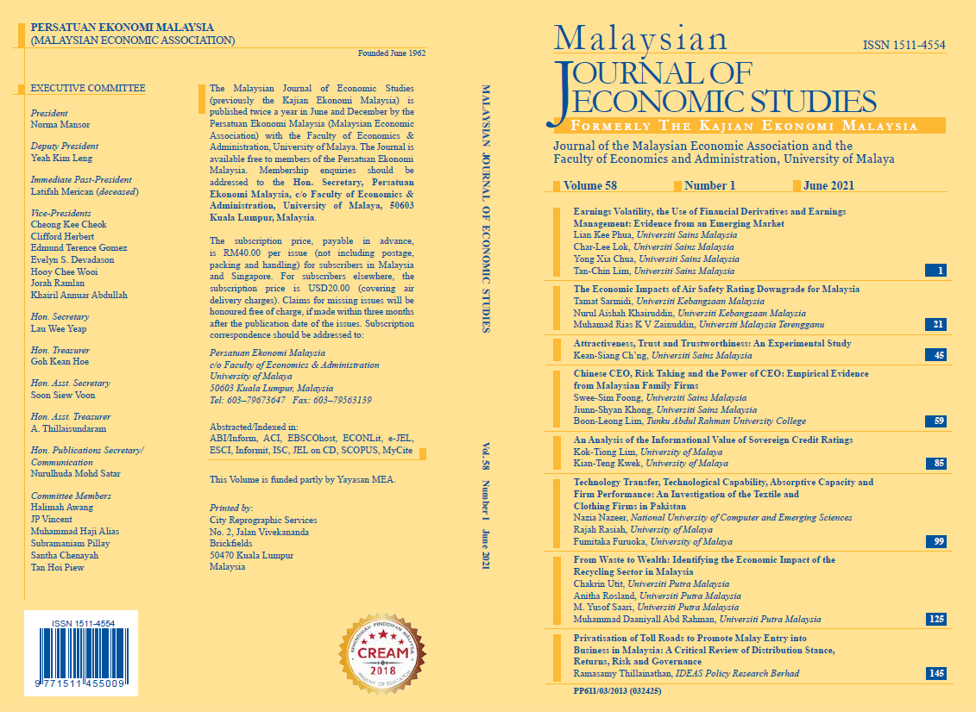The Economic Impacts of Air Safety Rating Downgrade for Malaysia
DOI:
https://doi.org/10.22452/MJES.vol58no1.2Keywords:
Air safety rating downgrade, air transport, difference-in-difference, input-output analysis, MalaysiaAbstract
In 2019, the US Federal Aviation Administration (FAA) downgraded the Civil Aviation Authority of Malaysia (CAAM) from tier one to tier two. Existing research has revealed that downgrading air safety ratings has a detrimental effect on the aviation sector. Although extensive research has been carried out on air safety downgrading, limited studies have delved into the backward and forward linkages and inter-industries framework. By employing a difference-in-differences (DID) panel data econometric and input-output (I-O) analysis to a modified sectoral aggregation of Malaysia’s I-O Table 2015, this study is able to simulate the impact of air safety downgrading. The findings show that, apart from being a “key” industry, air safety downgrades could result in a RM722.5 million loss to Malaysia’s GDP. A more in-depth inspection of the results indicates that the reduction in GDP mainly results from the air transport industry (RM252.0 million), other transportation services (RM107.0 million), and wholesale and retail trade (RM66.2 million). The findings complement earlier related studies that air safety rating downgrades could be a severe threat to sustainable economic growth.

